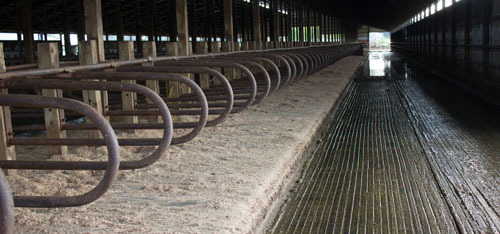
Continued high-feed costs and tight overall margins caused 2,321 dairy producers to hang up their milkers last year. Not only was that the most dairies since 2007, but it also tied that year on a percentage basis.
Overall dairy farm numbers fell from 49,281 in 2012 to 46,960 last year. That combination of fewer farms and steady cow numbers once again caused average herd size to climb to a new record. At 196 cows per herd, the average U.S. herd grew by nine cows this past year. That growth in cows per herd was the largest on a per head basis since the so-called survey on commercial dairy farms first took place in 1992.
The farms counted in this survey are those that have a permit to sell milk. This number differs from another USDA estimate . . . operations with milk cows (even just one). That total was 58,000 in 2012 and it has declined 110,500 or 65.6 percent in the past two decades. (Note, 2013 estimates on milk cow operations will not be available until late May 2014).
Nationally, average herd size has gone up 167 percent, from 74 to 196 cows. Regionally, the West (+279) and the Midwest (+151) have seen the largest percentage gains in herd size.
Western herds added 33 cows per herd last year, this was in addition to the 49 cows in the prior year, bringing their average to just two shy of 1,000 cows per operation. Meanwhile, the Southeast grew in herd size (+10) which was one cow higher than the national average. The Midwest (+8) was one cow shy of the national average growth. Northeast herds just added one cow to move herd size two short of a 100-cow average. From 2004 to 2013, gains ranged from 0 to 3 head annually in the Northeast.
To read a full report, along with state-by-state numbers, turn to page 151 of your March 10, 2014, issue. If you are not already a subscriber, order a subscription here. If you order a new subscription and would like to receive the article, send an email to editors@hoards.com and we will be sure to get you the complete analysis on farm numbers.








